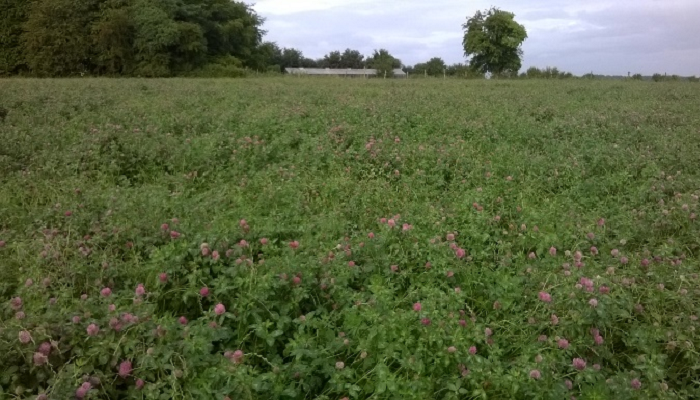11 March 2024
Establishment systems for red clover

Red clover is a relatively new crop to many and, as a result, farmers may be questioning the most appropriate system for establishing this crop over the coming months.
Primarily used for silage production when grown with companion perennial ryegrass grass varieties, red clover has grown in popularity on many Irish farms due to its ability to produce large quantities of forage from minimal or zero levels of artificial nitrogen input – something which heightened its desirability as a crop over the course of 2022 and 2023, a time of higher fertiliser prices.
As part of a recent Let’s Talk Organics Webinar, Lisa McGrane, who completed a Walsh Scholarship in Teagasc Athenry, presented data from her research studies, which examined the benefits of legume and herb inclusion in sheep grazed swards.
Part of the study examined how red clover performs under various establishment systems when grown under a sheep farming system. Four establishment systems were examined, including: conventional – plough, till and sow; disc, power harrow and sow; power harrow and sow; and a direct drilling system consisting of a one-pass with no cultivation. Prior to sowing, all trial plots were sprayed with glyphosate, something Lisa explained was not appropriate to the organic farmers tuned into the webinar.
Commenting on how red clover performed under different establishment systems, Lisa said: “There was no difference. There was similar levels of red clover in all of those swards irrespective of how it had been sown. There was about 12-15% red clover in all of those swards and there was no statistical significant differences in the amount of red clover that was in those swards.
“For me, that was a positive because it would show that farmers who would like to sow red clover swards would have a choice of methods that are available to them or their personal preference for what they would like to use.”
Weed species were also measured and across the establishment systems ~2-4% unsown species (weeds) were present in the swards, with Lisa showing that there was no statistical difference between weed content and how the crop was established.
Michael Egan, Grassland researcher in Teagasc Moorepark, also joined the webinar where he highlighted the pros and cons of red clover. Pros include: its high biological nitrogen fixation (>200kg N/ha); high dry matter production (>15t DM/ha); high intake potential; and high animal performance. The cons encompass: its unsuitability for grazing; poor persistence; the requirement for a four year break between red clover crops; and its difficulty in ensiling due to a lower dry matter content, which heightens the need to wilting at harvest time.
Michael also discussed seeding rates and he advised farmers to sow red clover seed at a rate of 7.5-10kg/ha (3-4kg/ac) – sown with perennial ryegrass – and to select varieties from the UK Recommended List, as no Irish Recommended List is available for red clover.
A recording of Lisa and Michael’s presentation to the Let’s Talk Organics Webinar is available here
More on Lisa’s research on herb and legume inclusion in sheep swards
Also read: Red clover a winner on suckler farms
